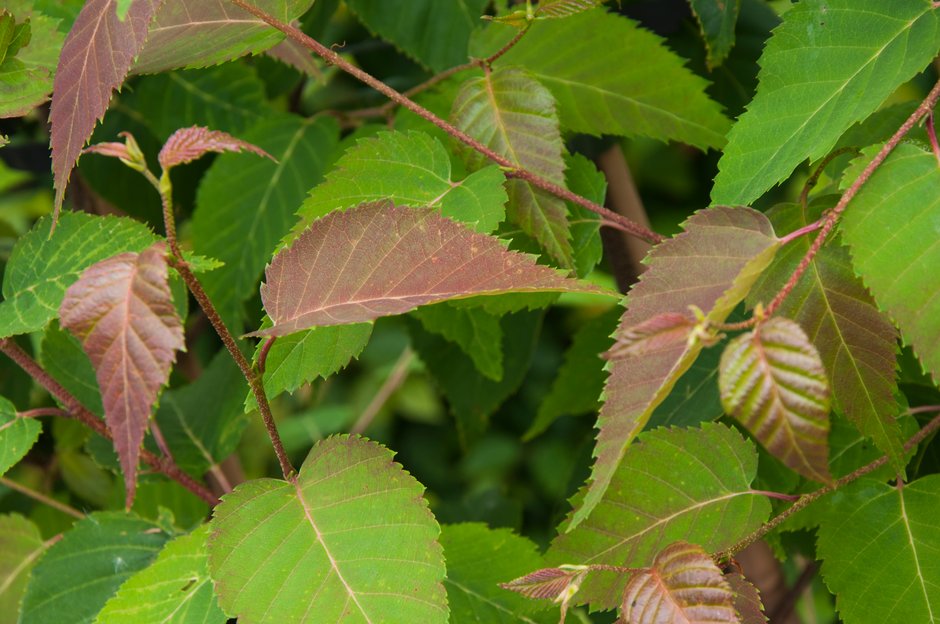Betula utilis subsp. albosinensis 'K. Ashburner'
Chinese red birch 'K. Ashburner'
A vigorous, upright, deciduous tree with cinnamon-coloured bark that peels to reveal a striking coppery-pinkish-red underlayer. Ovate, tapered leaves emerge bronze green in spring and turn yellow in autumn; hanging yellow-brown male catkins are borne in the spring
Size
Ultimate height
Higher than 12 metresTime to ultimate height
20–50 yearsUltimate spread
Wider than 8 metresGrowing conditions
Moisture
Moist but well–drained, Well–drainedpH
Acid, Alkaline, NeutralColour & scent
| Stem | Flower | Foliage | Fruit | |
| Spring | Bronze Pink Red | Yellow Brown | Bronze Green | |
|---|---|---|---|---|
| Summer | Bronze Pink Red | Bronze Green | ||
| Autumn | Bronze Pink Red | Yellow | ||
| Winter | Bronze Pink Red |
Position
- Full sun
- Partial shade
Aspect
South–facing or East–facing or North–facing or West–facing
Exposure
Exposed or Sheltered Hardiness
H7Botanical details
- Family
- Betulaceae
- Native to GB / Ireland
- No
- Foliage
- Deciduous
- Habit
- Bushy
- Genus
Betula can be deciduous trees or shrubs, usually colouring well in autumn and often with striking white, pink, or peeling brown bark; separate male and female catkins open before or with the leaves in spring
- Name status
Accepted
How to grow
Cultivation
Will grow in wide range of situations
Propagation
Suggested planting locations and garden types
- Cottage and informal garden
- Low Maintenance
- Flower borders and beds
Pruning
Pests
May be susceptible to birch borers, leaf-mining sawflies and aphids
Diseases
May be susceptible to honey fungus, a tree rust and powdery mildews
Get involved
The Royal Horticultural Society is the UK’s leading gardening charity. We aim to enrich everyone’s life through plants, and make the UK a greener and more beautiful place.
